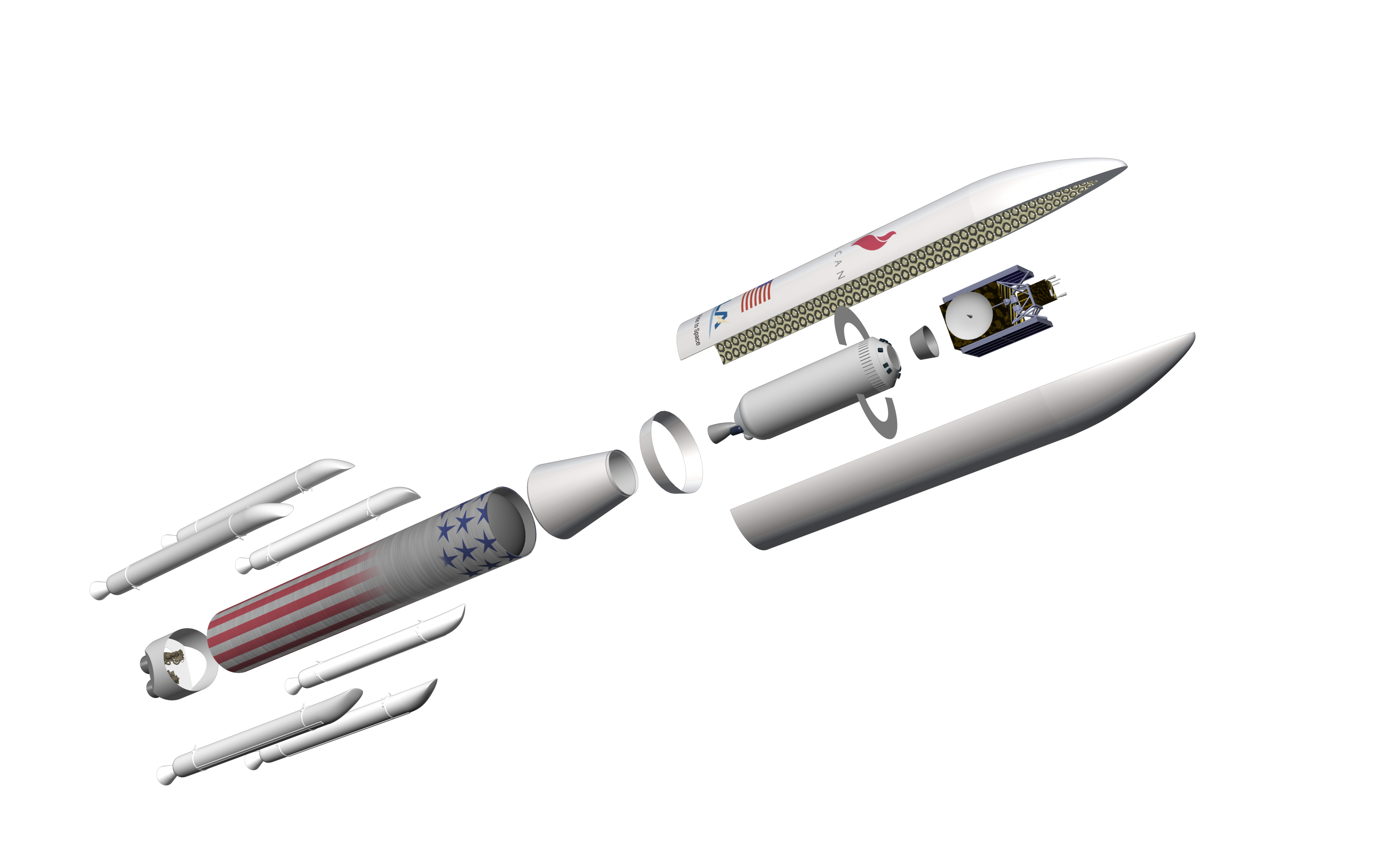Vulcan Centaur

Photo Credit : United Launch Alliance , via public domain wikipedia commons.
Vulcan Centaur is a two-stage-to-orbit, heavy-lift launch vehicle that is under development by the United Launch Alliance (ULA) since 2014 with an initial flight expected in 2021
Quick Facts About Vulcan Centaur.
- Type: Partial reusable launch vehicle.
- Origin : United states.
- Manufacturer: United Launch Alliance.
- In service : Currently in development planned first flight in 2022.
- Mass : 546,700 kg (1,205,300 lb).
- Length/Height : 61.6 m (202 ft).
- Diameter : 5.4 m (18 ft).
- Payload to LEO : (Vulcan centaur Heavy) 27,200 kg (60,000 lb).
- Payload to GTO : (Vulcan centaur Heavy) 7,200 kg (15,900 lb).
- Payload to TLI : (Vulcan centaur Heavy)12,100 kg (26,700 lb).
- Propellant: Boosters: HTPB, Al / AP. First stage : CH4 / LOX. Second stage : LH2 / LOX.
- Engines: Boosters: 0-6 GEM-63XL with thrust of 2,201.7 kN (495,000 lbf). First stage: 2 × BE-4 engines with thrust of 4,900 kN (1,100,000 lbf). Second stage : 2 × RL-10 engines with thrust of 212 kN (48,000 lbf).
Development of the Vulcan rocket started in 2014, largely in response to growing competition from SpaceX and a requirement to phase out the Russian RD-180 used on the Atlas V. Initially scheduled for an inaugural flight in 2020, the program was delayed by over three years due to problems with the development of the BE-4 engine and the new Centaur upper stage. Vulcan Centaur launched for the first time on 8 January 2024, successfully carrying Astrobotic Technology's Peregrine lunar lander, the first mission on NASA's Commercial Lunar Payload Services (CLPS) program.
Vulcan is ULA's first new launch vehicle design since ULA was formed in 2006 by the merger of the launch vehicle businesses of Lockheed Martin and Boeing. It adapts and evolves technologies that were developed for the Atlas V and Delta IV rockets of the USAF's EELV program. The first-stage propellant tanks contain liquid methane and liquid oxygen propellants rather than the Delta IV's liquid hydrogen and liquid oxygen.
Vulcan's upper stage is the Centaur V, an upgraded variant of the Common Centaur, the world’s first high energy upper stage. The Centaur III variant is currently used on the Atlas V. A version of the RL-10 engine with an nozzle extension, the RL-10CX, will be used on the Vulcan Centaur Heavy. ULA currently flies Centaur in either a single or dual engine configuration, leading to additional capability to satisfy launch demands. Previous plans called for the Centaur V to be eventually upgraded with Integrated Vehicle Fluids technology to become the Advanced Cryogenic Evolved Stage (ACES), but this has been cancelled. Vulcan is intended to undergo the human-rating certification process to allow the launch of crewed craft, such as the Boeing CST-100 Starliner or a future version of the Sierra Nevada Dream Chaser spaceplane.
The Vulcan booster has a 5.4 m (18 ft) outer diameter to support the Blue Origin BE-4 engines' liquid methane fuel.[18] In September 2018, after a competition with the Aerojet Rocketdyne AR1, the BE-4 was selected to power Vulcan's first stage.
Up to six GEM-63XL solid rocket boosters (SRB)s can be attached to the first stage in pairs, providing additional thrust during the first part of the flight and allowing the six-SRB Vulcan Centaur Heavy to launch a higher mass payload than the most capable Atlas V 551.
The Vulcan Centaur will have a four-character designation for each configuration, in which the first character represents the first stage of the vehicle; Vulcan is designated with the letter "V". The second character shows the upper stage; Centaur is designated "C". The third letter represents the number of SRBs attached to the Vulcan; "0", "2", "4" or "6". The final character represents the payload-fairing length configuration, which is indicated by "S" (Standard; 15.5 m (51 ft)) or "L" (Long; 21.3 m (70 ft)). For example, "VC6L" would represent a Vulcan first stage, a Centaur upper stage, six SRBs and a long-configuration fairing. The single-core Vulcan Heavy will have a Vulcan first stage, a Centaur upper stage with RL10CX engines with a nozzle extension and six SRBs.
Credit/References and for further info please see:
https://en.wikipedia.org/wiki/Vulcan_Centaur

Photo Credit : NASA , via public domain wikipedia commons.